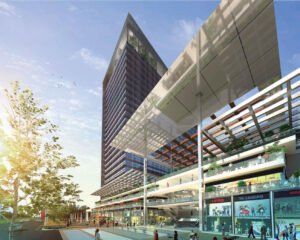Web design: A complete guide!.
The process of organising material online through planning, conceptualization, and design. Today, building a website involves more than just its appearance; it also takes into account its whole operation. User interface design, web apps, and mobile apps are all included in web design.
Did you realise that the way your website is designed may significantly affect how well it performs in search engines like Google? This post will provide you with some useful tips on how to design a website that not only looks great but also works well and achieves high search engine rankings.
A Tool for Web Designing
Using a desktop application or a website builder are the two primary methods for creating websites. The tool you choose to use will be highly influenced by the size of your team, your budget, the kind of site you want to construct, and its technical specifications.
1. Desktop programmes
Designers must generate their designs for desktop apps and transmit them to a development team so they may be turned into code. Photoshop and Sketch are the most often used desktop applications for website design.
This is usually the norm for big and/or complicated websites since it enables the designer to concentrate on the overall aesthetic while delegating all technical difficulties to the development team. Unfortunately, because numerous resources, skill sets, and team members are needed, this process may be costly and time-consuming.
It is advantageous to utilise a website builder to create a website with less technical needs in order to avoid hiring a developer.
2. Web designers
Today’s market is flooded with website builders that provide a variety of features and services. Popular website builders with varying design capabilities, template choices, prices, and overall editing experiences include Wix, Squarespace, Webflow, and Pagecloud. Make sure to do your homework, test out free trials, and decide which platform best suits the requirements of your website.
Website builders produce responsive or adaptive websites, each of which offers a unique construction experience. Below, we’ll go through these ideas in more detail so you can decide which builders are right for you. You can contact the Website Design Agency for Hire Web Designers.
Understanding the possibilities and constraints of various website design tools is crucial if you don’t know how to code. For instance, while being the most popular website platform, WordPress is not well-liked among graphic designers due to its little customization choices.
Determine your website’s requirements before you start creating it: Do you intend to create a photo gallery? How frequently will your website be updated? Do you require a form of contact? Select a website builder that will enable you to successfully achieve those objectives.
Elements of Web Design
It’s crucial to take both the website’s aesthetic and functionality into account while creating it. The performance and usability of the site as a whole will be maximised by using these aspects. The usability of your website is determined by factors like an intuitive user interface, proper use of visuals and pictures, well-written and strategically placed content, and colour scheme. The performance of your website includes its loading time, position in searches, searchability, and capacity to draw in visitors.
Visual components
Here is a brief summary of the components you should take into account while developing your website to make sure everything functions properly. There are hints and pointers in each section to get you going.
Text and design on your website work together fundamentally. For the purpose of producing a design that is coherent and has balanced features, it is crucial to have your content writers and designers collaborate. Use text blocks to create text chunks that will complement your pictures and photos.
Fonts
Pick a typeface that works well with your design as a whole. The font on your website should complement the colour scheme, visuals, and pictures on it while also enhancing its overall tone. You may find the ideal match for your typeface with the use of tools like Canva’s Font Combinator. Even within their software, web design tools like PageCloud provide a wide variety of font combinations.
Colors
One of the most crucial factors to take into account when developing a website is the use of colours. Remember that there are numerous myths about the psychology of colour, therefore it’s more crucial to concentrate on colours that go with the overall look and feel of your website. Integrate your brand’s colour palette with the messaging you want to get over to your audience.
Layout
The usability and functionality of your site will be significantly impacted by the way you opt to organise your material. There are a few key ideas to bear in mind while selecting a layout, but there are no set guidelines to follow. Avoid selecting an overly exciting layout that can distract from the ideas you want to deliver and keep in mind the demands of your target audience.
Shapes
Using visual components in web design may help with the overall aesthetic of the site and with the smooth integration of text and pictures. The attention of your site’s visitors may be directed and the general flow improved by combining pleasing colours and forms.
Spacing
For websites to be aesthetically beautiful and simple to use, spacing is a crucial component. Your design will use space in one form or another into every aspect. The right use of whitespace is essential to achieving the ideal balance between text, images, and graphics in a design. Consistent spacing might make it easier for people to traverse your website. Modern web designers undoubtedly prioritise the idea of whitespace.
Photos & Icons
Amazing designs have the power to convey a lot of information quickly. Strong visuals and iconography are used to accomplish this. Select pictures and icons that bolster and support your point of view. Thousands of alternatives may be found by performing a fast Google search for stock photos and icons. Here are a handful of our favourites to narrow down your search:
Videos
Web designers are increasingly incorporating video into their designs. When utilised effectively, videos may provide people with an understanding or experience that word or picture alone cannot provide. Remember that guests’ eyes are drawn to moving pictures, much like when a TV is on in a restaurant. Make sure your movies don’t conflict with or overshadow other crucial components.
Functioning components
When building your website, it is essential to take these functional components into account. For your website to perform well and provide your users with the greatest experience, good search engine rankings are essential.
Navigation
One of the key factors in determining whether your website is operating effectively is its navigation. Depending on your target audience, your navigation may have several functions, including facilitating the discovery of your site’s features by new users, facilitating quick access to your pages for recurring visitors, and enhancing the user experience for all visitors. For further navigational advice, go over these recommended practises.
Interaction with users
Depending on their device, your site visitors can engage with it in a number of different ways (scrolling, clicking, typing, etc.). The finest website designs make these interactions simple so that the user feels in charge. Here are a few illustrations:
- Never let music or video play automatically
- Never highlight text until it can be clicked.
- Ensure that every form is mobile-friendly.
- Skip the pop-ups
- Don’t use scroll jacking
Animations
Numerous online animation techniques exist that can draw viewers’ attention to your design and encourage interaction with your website by soliciting comments. The addition of “like” buttons or forms, for instance, helps keep website visitors interested. Keep your animations basic if you’re new to web design to prevent developer interference.
Speed
A sluggish website is disliked by everybody. When a page takes more than a few seconds to load, a visitor may easily decide not to stay on your site or come back. No matter how attractive, a slow-loading site will not perform well in search (i.e., will not rank well on Google).
There are no guarantees, but top site builders often compress your material for quicker loads. Make sure to conduct thorough research on the website builders that will best suit the material on your website. For websites with huge and/or numerous photographs, PageCloud, for instance, optimises your images to guarantee quick loading times.
Site architecture
Both search engine optimization (SEO) and user experience (UX) are significantly influenced by a website’s structure (SEO). Your website should have no structural problems that prevent people from effortlessly navigating it. It’s likely that “crawlers” are having trouble navigating your site if people are having trouble doing so.
A crawler, often known as a bot, is an automated computer that scans your website to assess its operation. A bad user experience and a low site ranking might result from inadequate navigation.
Interoperability across devices and browsers
All devices and browsers should display a stunning design with polish (yes, even Internet Explorer). If you’re creating your website from scratch, we advise employing a cross-browser testing tool to speed up and improve the effectiveness of this laborious process.
The cross-browser testing, on the other hand, is normally handled by the company’s development team if you’re utilising a website building platform, leaving you to concentrate on design.














Post Comment